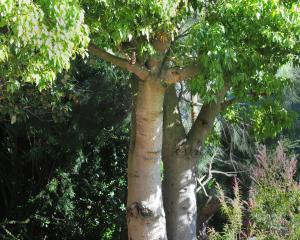During its seasonal changes, debris is scattered on the ground, reminding me to look up and admire its graceful beauty.
Cedrus deodara is native to the slopes of the western Himalayas; their massive trunks reach up to 50m, and are about 3m in girth.
It rarely attains these dimensions in cultivation, being introduced into the gardening world only in 1831.
The main feature is the spreading and more or less horizontal but drooping branches, making this tree an ideal specimen for a large garden.
The needle-like evergreen leaves are 5cm long, and arranged in clusters growing on spur-like growths along the branches.
In autumn, the large yellow male cones litter the ground as last year's female cones start to mature.
These are barrel-shaped and held upright on the branches for two years until the cone scales fall to the ground, releasing the seed, leaving the inner core attached like a little candle.
This feature, along with the needle arrangement, helps to distinguish Cedrus from other conifers.
Spring brings the delight of fresh, glaucous growth which slowly matures to a deeper green.
> Mature specimens are growing above the Rock Garden at the Dunedin Botanic Garden.
> Pruning destroys the natural shape.
> Slow growing and long-lived.
> Used as an ornamental in the Western world, it is a valuable source of timber in India and Pakistan.
An essential oil, cedar wood, is distilled from the fragrant timber.
Robyn Freeth is the rock, water and alpine collection curator at the Dunedin Botanic Garden.











